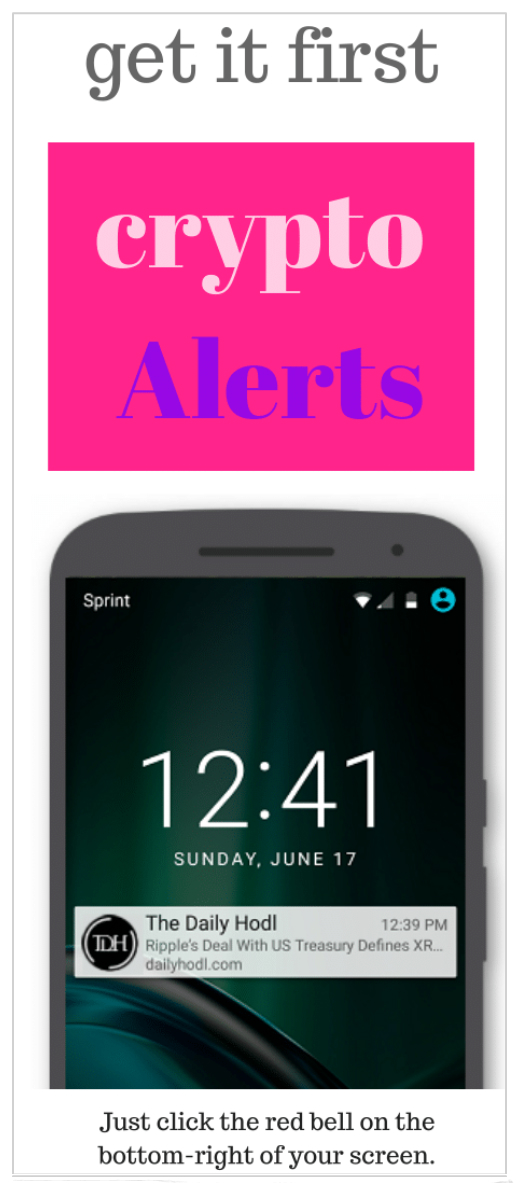HodlX Guest Post Submit Your Post
Abstract
The initial exchange offering (IEO) has been catching the interest of traders, project teams, and exchanges after the initial coin offering (ICO) fad has cooled off.
Currently, major trading platforms such as OKEx, Binance, Bittrex, Bitmax, Huobi, and KuCoin have conducted their own IEOs, and some of them have performed well after the issued tokens were listed on the exchanges.
This article will walk you through the rise of IEOs, focusing on its unique nature, its current status quo, its advantages and limitations, and what should be done to make it more efficient.
What is an IEO?
An initial exchange offering, as its name suggests, is conducted on the platform of a cryptocurrency exchange. An IEO is administered by a crypto exchange on behalf of the startup that seeks to raise funds with its newly issued tokens which will then be listed on the exchange.
Compared to ICOs, risk is transferred from the investors to the exchanges. Plus, crypto exchanges have a larger user base and will do complete due diligence before carrying out any IEO. This innovative pattern of raising money can mitigate risks of phishing, DDoS and other malicious attacks.
Users can buy the issued tokens directly from the exchange after completing the KYC procedures. Considering the hype of the newly issued tokens, exchanges usually set an individual buying cap.
Besides, the token issuer has to reach agreements with the exchange on terms, such as fees, issuance price, and the issuance volume, etc. In fact, the scope of IEOs is expanding, allowing projects that have gone through private sales (Celer Network) to perform an IEO. IEO projects can also carry out airdrop events (BitTorrent).
IEOs are similar to STOs in certain aspects, but the biggest advantage of IEOs over STOs lies in the better liquidity provided by the exchange once trading starts after the IEO, since a large user base is already guaranteed.
Status quo of IEOs
The initial exchange offerings for shares of BTT, FET, and CELR were around 6% with an individual buying cap. In fact, tokens were concentrated in the hands of a few big holders; therein they could manipulate the price. The limited amount of newly issued tokens makes it hard for retail investors to get them at their initial issuance price, and some resort to extreme efforts (buying KYC or an established account in the grey market) in order to buy the tokens in the secondary market.
Also, there is a price gap between a private sale and public sale, conducted at different times. Most of these private sales were carried out last year when market sentiment was better than it is now. However, you can see that the private sale price of FET is higher than that of its public sale price, which was probably propped up by the speculation hype.
Trading volumes of tokens pre and post-IEO varied significantly. For example, trading volumes of FET were rising continuously before its IEO, climbing to its peak on its IEO launch on February 25, and then it saw two lower highs after its IEO. IEOs also motivate users’ interest in crypto, bring user traffic to the listing exchanges, and lift market sentiment.
On the compliance side, some countries have banned IEO activities. Any IEO activities should shy away from these countries to avoid potential penalties.
What is the role of native tokens in IEOs?
Native tokens play an important role in an IEO. The prices of native tokens are usually pushed higher leading up to the IEO process.
First, since the tokens are issued by the exchange itself, native tokens have inherent advantages. As the medium of the IEO process, the exchange will make full use of the native tokens to facilitate the implementation of the IEOs. Plus, native tokens bond the project teams and the exchanges. The project team tends to cash out when the coin price is high while the exchange tends to maintain market stability.
Second, IEOs expand the utility of native tokens. As the essential tool for raising money for projects, native tokens are in large demand in the IEO process. Native tokens are also used to incentivize users and projects. With an increasing number of projects using IEOs to raise money, the ecosystem of native tokens is expected to expand exponentially.
Third, IEOs and native tokens can strengthen as well as harm each other. Native tokens can get pumped and dumped in overheated hype if they are concentrated in the hands of whales, which not only causes investors to suffer huge digital asset losses but also jeopardizes trust. In extreme cases, both the project team and the investors will dump their native tokens, causing the token’s price to collapse.
What are the advantages of IEOs?
A successful IEO can be an win-win scenario for token issuers, trading platforms, and users.
Token issuer startups benefit from the more flawless process of launching IEOs on exchange platforms?, ?compared to doing an ICO “on their own.” Plus, the exchanges will help the projects with marketing, improve their brand with their own influences. The large user base could naturally bring buyers to the issued tokens.
However, token issuers still need to go through a prolonged negotiation process with the exchanges to ink a deal outlining the terms of the IEO, such as the percentage of issued tokens and the listing fees. But an IEO is still a more ideal fundraising model due to the inherent risks of ICOs.
One of the main advantages of IEOs is trust. When the crowdsale is conducted on a cryptocurrency exchange platform, the counterparty screens every project. Exchanges do this to maintain their good reputation by carefully vetting token issuers. Therefore, IEOs can eliminate scams and dubious projects from raising funds.
Besides, token issuers do not have to worry about the crowdsale security as the exchange is managing the IEO’s smart contract. The KYC/AML process is also handled by the crypto exchange as most service providers do KYC/AML on their customers after they create their accounts. Relative security is also guaranteed for the investors, as the exchanges will wash out the ineligible projects that may pose risks to investor’s assets, thus creating a safer crypto investment environment.
The limitations of IEOs
Currently, different countries hold various attitudes towards the crypto industry, and most countries have yet to outline a clear legal framework for regulating the crypto industry. Since the ICO bubble burst, several countries have not yet taken a stance toward on the IEO. While China has firmly banned crypto activities, some regions and countries, such as the US, Japan, and South Korea, require licenses for crypto-related firms to operate.
Countries such as Malta and Switzerland hold an open attitude towards cryptos. In order to protect investors’ interests, it is essential for exchanges operating IEOs to acquire necessary licenses and comply with the laws and regulations of their origin countries.
Currently, only South Korea has released a guideline on IEOs, covering the protection of investors, projects’ development planning, technical materials, compliance, and security issues. The guideline sets an evaluation score package for IEOs, totaling 1,000 points. If a token issuer gets a score below 700 points, it can only raise a hard cap of KRW1.5B (~ $1.4 million), while those that get a score above 700 points do not have a fundraising cap.
Since some governments deem IEOs and ICOs to be similar, it is uncertain whether major countries will step in and regulate the market, causing concerns for token fundraising events.
Furthermore, it has been reported that some people are buying and manipulating KYC qualifications in order to get involved in IEOs, which severely goes against the decentralized and transparent nature of blockchain technology. For investors, it is important to opt for exchanges that have a comprehensive and reliable KYC verification system that can guarantee fair participation in token sales.
As mentioned, since the number of issued tokens is limited in an IEO, it raises the risk of large token holders manipulating the token’s price and causing volatility in the market, resulting in losses to retail investors. To manage such risks, investors must fully understand the token distribution of a project before investing, and only participate in IEOs hosted by exchanges with recognized and established investor protection measures and sufficient market liquidity.
While the number of fund-seeking token issuers and the associated benefits increases, chances are exchanges may compromise on the quality or the real fundamentals of a project in order to launch as many IEOs as they can. To ensure the quality of project selection, investors may turn to exchanges that operate IEOs with a transparent and trustworthy project evaluation system. However, investors are always advised to do their own research before making any investment decision.
Conclusion
As the ICO frenzy has cooled off, the IEO provides a new fundraising method for blockchain projects and an extra layer of trust and security. Exchanges have to rely on themselves to screen every project and select the high-quality ones to launch IEOs. However, the lack of a regulatory framework in most countries still causes uncertainties about this fundraising practice, creating the major reason for investors to shy away.
In simple words, IEOs can create win-win scenarios for the projects, exchanges, and investors. However, since the IEO is still in its infancy, all stakeholders, including the legal authorities, need to step in to make a win-win happen.
List of countries and regions that currently ban IEOs
- Afghanistan
- Albania
- Bosnia and Herzegovina
- Burundi
- Canada
- Central Africa
- Congo
- Cote d’Ivoire
- Ethiopia
- Guinea-Bissau
- Iran
- Iraq
- Lebanon
- Liberia
- Libya
- Macedonia
- Mainland China
- Malaysia
- Myanmar
- New Zealand
- North Korea
- Serbia
- Somalia
- South Sudan
- Sri Lanka
- Sudan
- Syria
- Thailand
- The Republic of Belarus
- The Republic of Guinea
- Trinidad and Tobago
- Tunisia
- Uganda
- Ukraine
- United States
- Venezuela
- Yemen
- Zimbabwe
About OKEx
OKEx is a world-leading digital asset exchange headquartered in Malta, offering comprehensive digital assets trading services including token trading, futures trading, perpetual swap trading and index tracker to global traders with blockchain technology. Currently, the exchange offers over 400 token and futures trading pairs enabling users to optimize their strategies.
Follow Us on Twitter Facebook Telegram












